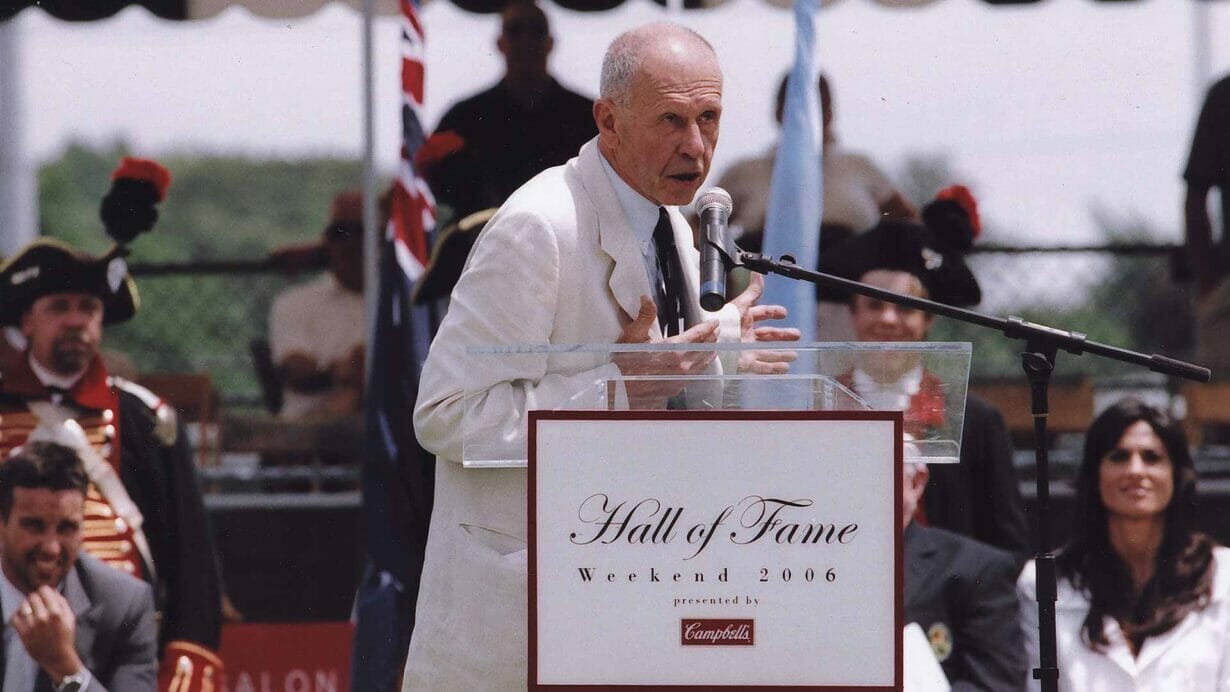

Hall of Famer Gianni Clerici, a celebrated Italian journalist whose 500 Years of Tennis is widely regarded as the definitive book on the origins of the sport through the first century of competition, passed away Monday. Clerici was inducted into the International Tennis Hall of Fame in 2006 in recognition of his immense contributions to tennis as a journalist, historian, and broadcaster. He was 91 years old and living in Bellagio, Italy when he passed away.
In addition to his work as a writer, Clerici was a discerning art collector, who amassed a carefully curated personal collection of tennis-inspired art from the 17th century to the 21st century. The exquisite collection including paintings, sculptures, decorative arts, and more, from which more than 30 pieces were recently acquired by the International Tennis Hall of Fame. These pieces are now on display in the International Tennis Hall of Fame Museum where tennis enthusiasts can enjoy exploring the sport through the unique eye of a keen tennis expert and thoughtful art collector.
A prolific writer and broadcaster, Clerici contributed to a wide range of publications for more than six decades, and was a popular figure on television. Known for his immense flair and distinctive personality, Clerici regaled audiences on the air and kept readers thoroughly immersed with his imaginative reporting and excellent storytelling skills.
“Gianni was a great writer who was stolen by the sport of tennis in a sense because he was an artist who could write about anything,” said his longtime Italian colleague Ubaldo Scanagatta. “His colorful description of the players was unique. Gianni would write stories that thousands of people who did not care much about tennis would love because he was a painter in print.”
His contribution as a newspaperman commenced in 1951. He reported for a national newspaper called Il Gorno which was based in Milan for 25 years. He then joined the prominent newspaper La Repubblica in Rome, for whom he wrote for more than thirty years. Clerici’s daily reports were never as steeped in statistics as many of his fellow writers. Rather, Clerici was an extraordinary interpreter of the tennis scene. He would often trust his own impressions over those of the players, and that independence was a central feature of his work.
Somehow, Clerici found time to explore every forum available to him as a communicator including magazines and many books. His illuminating biography of the French icon Suzanne Lenglen, Divina, was one of Clerici’s most important works, lauded by the literati for the richness of his insights and the clarity it brought to a singularly compelling champion who transformed the world of women’s tennis.
Clerici’s research was always comprehensive, most notably in 500 Years of Tennis (500 Anni di Tennis), which was hailed as a masterpiece by many other learned critics of the game. Clerici took his readers back to the 14th Century and carried them into the 1970s in his sweeping historical overview on the evolution of tennis. In the book, Clerici was able to uncover the emergence of the first racquets and balls and other fascinating developments.
Meanwhile, Clerici authored numerous other books on the game including two on instruction. Despite his deep dedication to tennis journalism, Clerici also established himself as a distinguished playwright and was honored in that capacity for the “Best Play of 1987” in Italy called Ottavino e Cleopatra. He also wrote several other plays, a number of novels and even some poetry.
Giovanni Emilio “Gianni” Clerici was born on July 24, 1930 in Como, Italy where he lived for much of his life. As a boy, he developed an affinity for tennis and was a successful junior player. He captured two National Junior doubles titles in 1947 and 1948 as well as reaching the final of the singles in 1950.
In his early twenties, Clerici competed in the men’s singles at Wimbledon, making the main draw in 1953 and appearing in doubles on those same British lawns a year later.
As well as he may have played the game, Clerici was born to be part of his beloved sport in a different way. Clerici was a masterful creative force, a supreme wordsmith when holding a microphone or controlling a keyboard, and ultimately an artist unlike anyone in the tennis journalistic world.
– Story courtesy of International Tennis Hall of Fame and Hall of Famer Steve Flink
Editor’s Note: The FIT (Italian Tennis Federation) has announced that the press room at the Foro Italico will be named in honour of Clerici.






